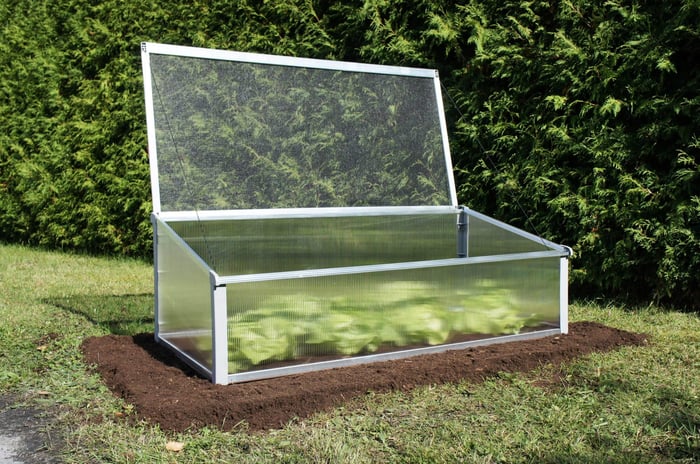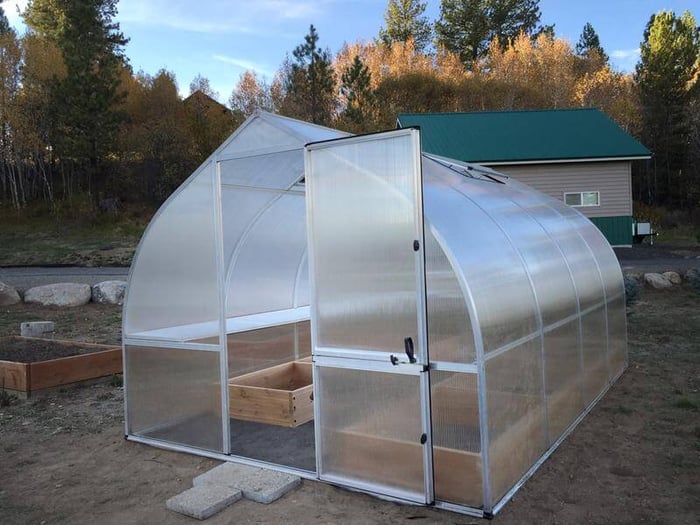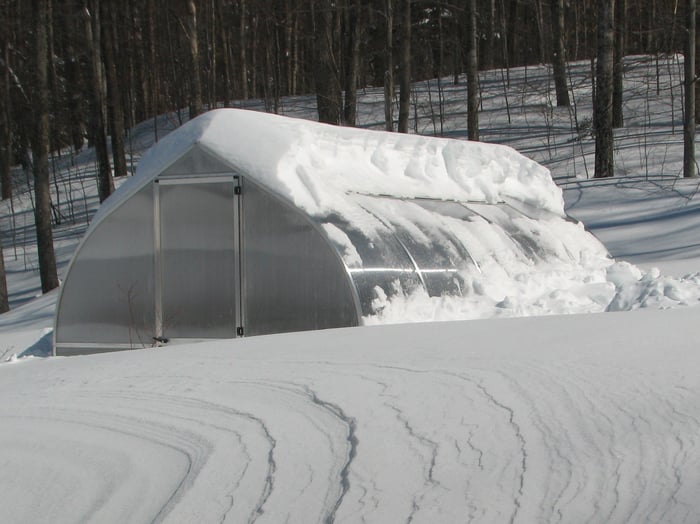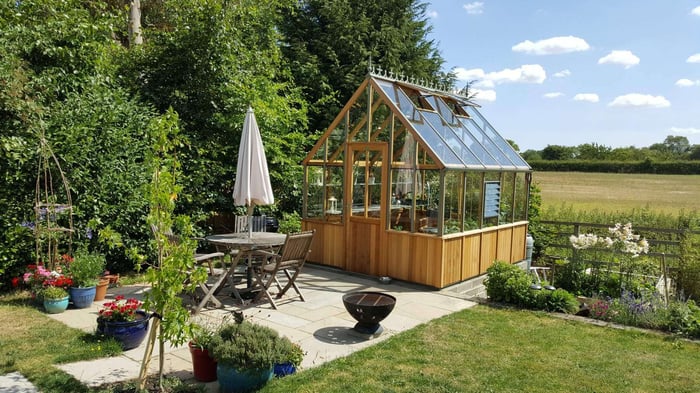Table of Contents
The Complete Guide to Cold Frame Greenhouses: Extending Your Growing Season
For gardeners looking to maximize their growing potential without the expense and complexity of full-sized structures, cold frame greenhouses offer an ideal solution. These compact, efficient season extenders have been helping gardeners grow fresh produce year-round for centuries, and their popularity continues to grow among both novice and experienced cultivators.
What Are Cold Frame Greenhouses?
Cold frame greenhouses are essentially miniature greenhouses that capture and retain solar energy to create a protected microclimate for plants. These structures consist of a wooden frame with a transparent top, typically made from plastic or glass, creating a controlled environment that shields plants from harsh weather while allowing sunlight to penetrate and warm the interior.
Unlike traditional greenhouses, cold frames require no external heating source. Instead, they rely on passive solar heating during the day, with the frame and soil storing this heat energy to keep plants warm during cooler nights. The ground and frame of the cold frame are heated by the sun during the day and radiate that heat during the night, keeping the inside warmer.
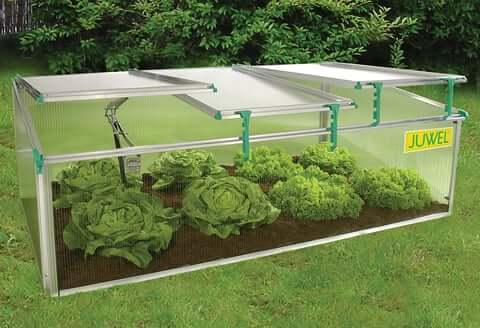
The Benefits of Cold Frame Greenhouses
Season Extension
One of the primary advantages of cold frames is their ability to significantly extend your growing season. They are used to extend the growing season by two to four weeks in both the fall and the spring. This extension allows gardeners to start planting earlier in spring and continue harvesting well into fall and even winter in many climates.
Cost-Effective Growing Solution
Cold frames shine as an affordable entry point into season extension with minimal space requirements and energy costs. Compared to heated greenhouses or other season extension methods, these mini greenhouses require minimal initial investment and no ongoing energy costs.
Juwel Mini-Greenhouse Cold Frame
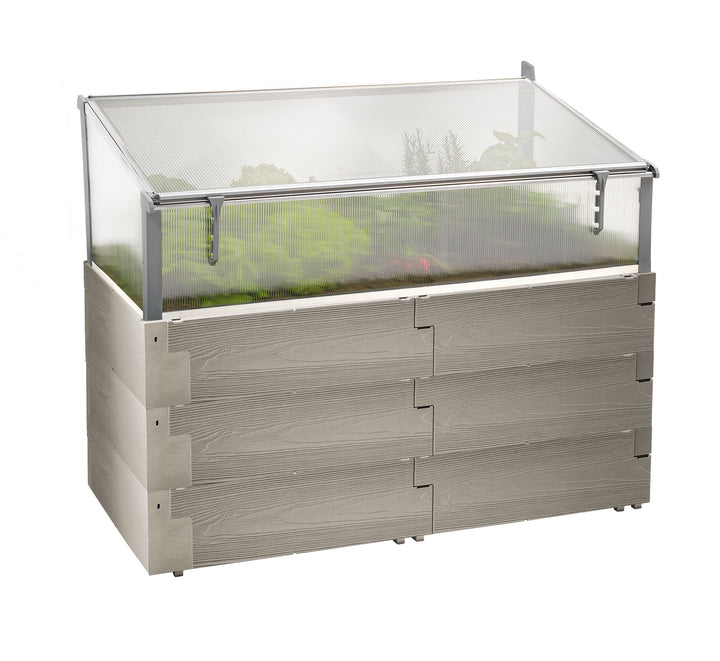
$229.99
Juwel Mini-Greenhouse Cold Frame The All-in-One Solution for Elevated, Year-Round Gardening Crafted by Juwel| Sold by South Table Sheds Free Shipping No Tax Authorized Dealer Take your garden to the next level—literally—with the Kombi Dual Function Raised Cold Frame, a… read more
Perfect for Hardening Off Plants
Cold frames are excellent for hardening seedlings that were started indoors or in a greenhouse, providing a transition period for gradual adjustment to the outdoor weather. Rather than shocking tender seedlings with sudden exposure to outdoor conditions, cold frame greenhouses create a controlled environment where plants can gradually acclimate to temperature fluctuations and wind exposure.
Space Efficiency
For gardeners with limited space, cold frame greenhouses offer maximum growing potential in a minimal footprint. These compact structures can fit into small yards, patios, or even balconies, making them accessible to urban gardeners and those with space constraints.
Protection from Pests and Weather
Cold frame greenhouses provide excellent protection from various environmental stressors. They shield plants from frost, wind, hail, and heavy rain while also creating a barrier against many common garden pests like slugs, snails, and various insects.
Why Cold Frame Greenhouses Are Particularly Useful
Early Spring Planting
Cold frames allow gardeners to start their growing season weeks earlier than traditional outdoor planting would permit. Cool-season crops like lettuce, spinach, kale, and radishes thrive in these protected environments, often growing throughout winter in moderate climates.
Winter Growing
Many gardeners are surprised to discover that cold frame greenhouses can support active growing throughout winter months. Hardy vegetables like winter lettuce varieties, mache, winter radishes, and cold-tolerant herbs can continue producing fresh harvests even when outdoor gardens are dormant.
Juwel Cold-Frame Kit BioStar 1500
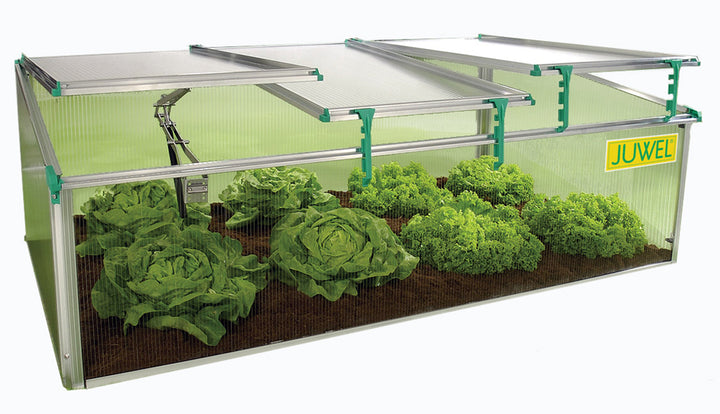
$534.00
Juwel Cold-Frame Kit BioStar 1500 Extend Your Growing Season with Protection Crafted by Juwel| Sold by South Table Sheds Free Shipping No Sales Tax Authorized Dealer Give your plants a strong, early start and extend your harvest into cooler months… read more
Seed Starting
These mini greenhouses provide an ideal environment for starting seeds, offering more control than direct outdoor sowing while requiring less infrastructure than indoor seed starting setups. The natural light conditions and gradual temperature variations help produce strong, robust seedlings.
Late Season Harvests
As autumn temperatures drop, cold frame greenhouses can keep warm-season crops producing longer. Tomatoes, peppers, and herbs can continue growing and ripening well past their normal outdoor season when protected within these structures.
What to Look for When Choosing Cold Frame Greenhouses
Frame Materials
The construction material of your cold frame significantly impacts its durability and performance. Use rot-resistant wood like cedar, redwood, or pressure-treated lumber for a cold frame. Cedar and redwood offer natural rot resistance and attractive appearance, while pressure-treated lumber provides affordability and longevity.
Aluminum is an excellent choice for cold frame construction, offering superior durability and weather resistance without the maintenance requirements of wood. Aluminum frames won't rot, warp, or require regular staining or sealing, making them ideal for year-round outdoor use. The material's lightweight nature makes aluminum cold frames easy to move and reposition as needed, while its excellent heat conductivity helps maintain consistent temperatures inside the frame.
Top Material Options
The transparent top of cold frame greenhouses requires careful consideration, as this component determines light transmission and heat retention capabilities. The best materials are those that balance durability and light transmission, such as polycarbonate panels or glass for the lid.
Glass provides excellent light transmission and longevity but can be heavy, expensive, and potentially dangerous if broken. Polycarbonate panels offer good light transmission with superior impact resistance and insulation properties. Twin-wall polycarbonate provides additional insulation while maintaining good light levels.
Size Considerations
Cold frames come in various sizes to accommodate different needs and spaces. Consider your available space, the types of crops you plan to grow, and your maintenance preferences when selecting size. Larger cold frame greenhouses provide more growing space and better temperature stability, while smaller units are more manageable and affordable.
Ventilation Features
Proper ventilation is crucial for mini greenhouse success. Look for models with adjustable venting systems or plan to install automatic vent openers. Propping the lid open on warm days allows cooler air to circulate and prevent heat damage to the plants. Automatic vent openers that respond to temperature changes can prevent overheating when you're not available to manually adjust ventilation.
Insulation Properties
Consider the insulation properties of different cold frame greenhouse designs. Double-wall construction, thermal mass materials, and tight-fitting lids all contribute to better heat retention. Some gardeners enhance their mini greenhouses with additional insulation materials around the perimeter during extremely cold periods.
Construction and Setup Considerations
Location Selection
Choose a location that receives maximum sunlight, particularly during winter months when sun angles are lower. South-facing locations typically provide optimal solar gain. Ensure the location is protected from strong winds and has good drainage to prevent water accumulation.
Orientation and Slope
The lid of cold frames should slope from north to south to maximize solar exposure. A slope of approximately 15-30 degrees helps optimize light capture while allowing rain to run off effectively.
Foundation Preparation
While cold frame greenhouses don't require elaborate foundations, proper ground preparation is important. Level the area and consider adding a layer of gravel for drainage. Some gardeners prefer to sink their cold frame greenhouses partially into the ground for additional protection and thermal mass.
Maximizing Success with Cold Frame Greenhouses
Crop Selection
Choose appropriate crops for your cold frame based on your climate and season. Cool-season vegetables perform best in these environments, though you can also use cold frame greenhouses for starting warm-season crops before transplanting them to the main garden.
Temperature Monitoring
Keep a thermometer inside your mini greenhouses to monitor temperature conditions. This information helps you understand when ventilation is needed and whether additional protection might be required during extreme weather.
Watering Management
Plants in cold frame greenhouses may require different watering schedules than outdoor plants. The protected environment reduces water loss from wind and direct exposure, but heating effects can increase evaporation rates. Monitor soil moisture regularly and adjust watering accordingly.
Seasonal Adjustments
Use your cold frame differently throughout the seasons. Spring applications focus on early planting and seed starting, summer use might emphasize hardening off and protecting tender plants, fall applications extend harvests, and winter use maintains production of cold-hardy crops.
To sum it up...
Cold frames represent one of the most practical and cost-effective ways to extend your growing season and enhance your gardening success. These versatile structures offer numerous benefits, from protecting tender seedlings to enabling winter harvests, all while requiring minimal investment and maintenance.
Whether you're a beginning gardener looking to expand your growing capabilities or an experienced cultivator seeking to maximize your harvest potential, these mini greenhouses provide an excellent solution. By understanding their benefits, selecting appropriate materials and designs, and implementing proper management techniques, you can enjoy fresh, homegrown produce throughout more of the year.
The beauty lies in their simplicity and effectiveness. As you consider adding season extension capabilities to your garden, these compact, efficient structures deserve serious consideration for their ability to transform your growing potential while fitting seamlessly into gardens of all sizes.
FAQs
What is a cold frame and how does it work?
A cold frame is a bottomless box with a transparent lid that creates a mini greenhouse effect, trapping solar heat and protecting plants from wind and frost. It works by allowing sunlight in during the day to warm the soil and air inside, then retaining that heat at night when temperatures drop.
Where should I position my cold frame in my garden?
Position your cold frame in a south-facing location that gets maximum winter sun, sheltered from strong winds. Place it on well-draining ground and angle the lid slightly downward from back to front for better light exposure and rain runoff.
What vegetables grow well in cold frames during winter?
Kale, spinach, arugula, mache (corn salad), winter radishes, carrots, and Asian greens like bok choy. These cold-hardy crops can withstand frost and actually taste sweeter after exposure to cold temperatures.
Can I grow lettuce and greens all winter?
Yes, you can grow lettuce and greens all winter in a cold frame, especially cold-tolerant varieties like winter lettuce, spinach, and kale. Growth will be slower in the coldest months, but they'll continue producing fresh leaves throughout winter.
How do I protect plants during extreme cold snaps?
During extreme cold snaps, add extra insulation like old blankets, straw, or bubble wrap over the lid at night, and consider placing water jugs or thermal mass inside to store and release heat. You can also bank soil or mulch around the outside walls for additional protection.

